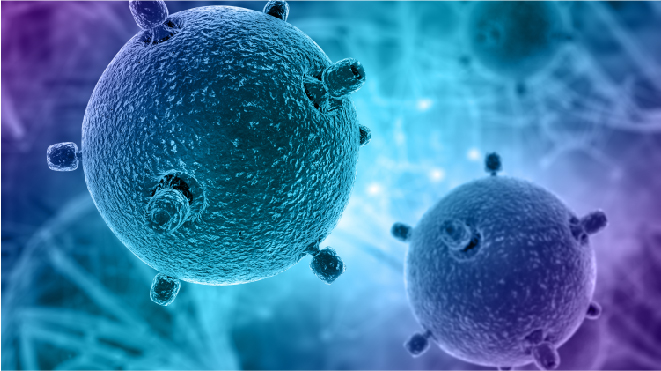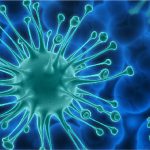Myelodysplastic syndrome is a type of blood cancer caused due to immature blood cells. These cells are present in the bone marrow and do not mature, because of which they remain unhealthy. The blood cells formed by these immature cells are defective. These abnormal cells die earlier than the healthy ones. The body in its general functioning destroys some abnormal cells reducing the blood count. Different cell types are affected but the most commonly affected ones are red blood cells.

MDS can progress rapidly to growing cancer of the bone marrow cells. It is also referred as preleukemia or smouldering leukemia. The bone marrow in MDS is more active than in normal cells and this disease is more common in adults than in children.
Incidence of MDS
MDS is a very rare type of blood cancer. A few surveys by the National Cancer Institute Surveillance, Epidemiology, and End Results (SEER) have shown that the incidence of MDS in elderly patients is more observable, with 13.5 for 65-69 years age group and 63.6 in those aged≥85 years per 100,000. MDS is observed to be very rare in kids and middle-aged population.
What happens in MDS:
MDS occurs due to the mutations of genes that are responsible for the development of blood cells. This results in abnormalities in the growth of blood stem cells.
These abnormal bone marrow stem cells produce a number of immature blood cells, which do not grow properly and die prematurely. This results in a decreased number of mature and healthy blood cells. A few cells that do not die, function abnormally.
Patients with MDS have an active bone marrow but very few circulating blood cells. This causes fatigue and makes the patient more susceptible to bleeding, bruising and infections.
Risk factors of MDS:
Risk factors increase the person’s chance of developing the disease. Following are the factors that aid the development of MDS in patients:
-
Age:
MDS is very rare in younger patients. It is most observed in patients who are above 50 years, especially in 70-80 years age group.
-
Sex:
MDS is more common in men than women
-
Cancer treatment:
Patients who have been treated with chemotherapeutic drugs are more likely to develop MDS post the treatment. MDS caused by another cancer treatment is known as secondary MDS or treatment-related MDS.
-
Genetic syndrome:
People with inherited syndromes like fanconi anemia, familial platelet disorder and severe congenital neutropenia are more likely to develop MDS. These are caused due to abnormal mutations in genes.
-
Smoking:
The cancer causing substances are absorbed and pass through the bloodstream which might lead to cancer.
-
Environmental exposure:
Exposure to high doses of radiation, benzene and other chemicals used in rubber and petroleum industries increases the risk of developing MDS.
Causes of MDS:
There are a number of factors that could cause MDS. It’s a very common disease and due to its occurrence in a number of people, the causes are very diverse and vary from each individual.
The following are a few factors that could be a reason for MDS:
- MDS is observed in men more than women.
- Any blood cancer can affect people of all age groups. But according to research, the possibility of MDS occurring in children is very rare than adults.
- Previous cancer treatments like Chemotherapy and radiotherapy can also lead to MDS.
Symptoms of MDS
The symptoms of MDS are quite similar to any other blood cancer. The following include the most observable ones:
- Anemia (due to low blood cell count)
- Chromosomes abnormalities
- Neutropenia (low neutrophil count which makes the person vulnerable to infections)
- Thrombocytopenia (low platelet count)
- Abnormal granules in the cells
- Tiredness
- Frequent infections
- Night sweats
Diagnosis of MDS
MDS is diagnosed through blood tests and bone marrow tests. First step in diagnosis is a complete blood cell count (CBC). When these results express a possibility of occurrence of disease, the actual diagnosis begins. A sample of bone marrow is taken to examine it for any abnormalities in the bone marrow. These tests also give information about chromosomal abnormalities such as extra or missing chromosomes. Examining the gene mutations is also done in a few cases, through molecular tests.
All the above tests depend on morphological examination. That is, how the blood cells appear and how they are observed under a microscope.
Treatment for MDS
Depending of the type of blood cell affected the treatment for MDS is decided. The treatment of MDS doesn’t start immediately after detection. The patients undergoes regular check up and continuous diagnosis is done. The treatment that the patient is given depends upon the type of MDS he/she has, the IPSS-R risk group they are in, overall health, tolerance to the treatment and general preferences of the patient. In a few cases, patients are given treatment to control the low blood count and its side effects. This is known as supportive treatment. A complete cure to MDS is obtained through stem-cell transplantation. There are many treatment options available to treat MDS. They are:
-
Blood cell transfusions:
Red blood cells and white blood cell transfusion is a part of treatment for MDS in patients whose blood cell count is too low.
-
Chemotherapy:
This treatment involves the usage of drugs that destroy the cancer causing blood cells and restrict their growth. The procedure includes a few drugs which are given intravenously. The treatment occurs in stages over a period of time. Patients may receive one drug at a time or combinations, depending on various factors like type of MDS the patient has, tolerance levels of the patient, age and stage of chemotherapy. Common drugs used in the treating MDS through chemotherapy are Cytarabine (Cytosar-U), Decitabine (Dacogen), Azacitidine (Vidaza), Daunorubicin (Cerubidine) and Idarubicin (Idamycin). About 40% of the patients fights MDS through chemotherapy for blood cancer.
-
Immunotherapy:
This treatment is designed to improve the body’s natural defense to fight this cancer. The materials used in this treatment is either made by the body or are externally given in order to restore the patient’s immune system function. A type of immunotherapy depends on the type of MDS and various other factors. A type of immunotherapy, antithymocyte globulin (ATGAM, Thymoglobulin) is used in treating MDS, post Chemotherapy.
-
Stem-cell and bone marrow transplantation:
This procedure involves the replacement of damaged and cancerous stem cells in the bone marrow with highly specialised cells that develop into healthier cells. These cells are known as Hematopoietic stem cells. These cells are found both in the blood and in the bone marrow. This procedure is mainly referred to as stem-cell transplantation rather than bone marrow transplantation, as it includes the replacement of stem cells and not the bone marrow. There are two types of transplantations. One is Allogeneic (ALLO- uses donated cells) and Autologous (AUTO- uses body’s own blood cells). Both the types share the same objective of detecting and killing the cancer cells in the blood, marrow and other parts also. Further the treatment aims to replace the stem-cells in order to make the bone marrow healthy enough to prepare healthy and normal blood cells.
-
Side effects of MDS
The side effects of MDS treatment completely depend on the type of MDS the person has been diagnosed with and which treatment was used to suppress it. The following are a few common side effects:
- Risk of infections: The patients could be at a very high risk of catching an infection if the donor has a bad medical history.
- Transfusion reactions: During red blood cells and platelet transfusion, there could be a chance of the patient getting a rash or fever. This is not observed during the transfusion of white blood cells as filtered blood is used.
- Fluid overload: During transfusion, especially in adults or elderly aged people, the fluid levels in the body drastically increase, to which a few patients cannot adapt.
- Iron overload: After a few red blood cell transfusions, the iron levels in the body can increase significantly. Medication is prescribed to safely bind the iron and let the excess out from the body.
- Infertility and Early menopause: Cancer treatments and drugs can sometimes affect the reproductive system. The medication have a direct impact on the functionality of the ovaries leading to infertility and early menopause in women. In men, sperm production is impaired.
- Other side effects include Hair loss, Fatigue, Mucositis, changes in taste and smell, bowel changes. These effects are temporary and last only until the treatment ends.



